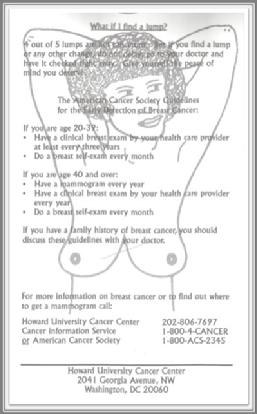The Source, helping women find answers to key issues that nurture endeavors and mitigate life challenges..
Tap here for more Info.
Protect Your Credit: General Tips
Click HERE to watch video released by the Office of the Director of National Intelligence to learn about several ways to protect your information.
Did you know that you are entitled to one FREE credit report a year from “each” consumer credit reporting agency:
TransUnion: 1 (800) 916-8800
Equifax: 1 (888) 548-7878
Experian: 1 (888) 397-3742
Protect Your Credit
Monitor your financial account statements and immediately report any suspicious or unusual activity to financial institutions. Request a free credit report here or by calling 1-877- FACTACT (322-8228).
Consumers are entitled by law to one free credit report per year from each of the three major credit bureaus – Equifax®, Experian®, and TransUnion® – for a total of three reports every year.
When you order, you will need to provide your name, address, Social Security number, and date of birth. To verify your identity, you may need to provide some information on your credit report, such as the amount of your monthly mortgage payment.
Your free annual credit report does not include your credit score. A credit score is an additional service that can be purchased when getting your credit report. Along with knowing your credit score you will learn what factors positively or negatively impact your credit risk.
Review resources provided on the Federal Trade Commission (FTC) identity theft website. The FTC maintains a variety of consumer publications providing comprehensive information on computer intrusions and identity theft.
-You may place a fraud alert on your credit file to let creditors know to contact you before opening a new account in your name. Call TransUnion® at 1-800-680-7289 to place this alert. TransUnion® will then notify the other two credit bureaus on your behalf.
Tap here for more Info.
Start Your Business
Four Indicators of Success
Founders are driven by impact, resulting in passion and commitment
Commitment to stay the course and stick with a chosen path
Willingness to adjust, but not constantly adjusting
Patience and persistence due to the timing mismatch of expectations and reality
Willingness to observe, listen and learn
Leadership with general and domain specific business knowledge
Start your Own Business
Thinking about starting a business? You’re not alone. There are approximately 9.1 million women-owned businesses in the United States (subject to change). All it takes is an idea and determination. Here are a few basics to get you started.
- Decide on what it is you want to do. Conduct Market Research to include start-up cost.
- Seek counseling from a Small Business Administration (SBA) counselor- they can provide a wealth of information. Talk to other business owners.
- Decide business name and business entity:
- Sole Proprietorship
- Partnership
- Corporation
- S Corporation
- Limited Liability Company (LLC)
Other Resources
Tap here for more Info.
MOTHERS-TO-BE
Top 5 Books
What to Expect When Your Expecting/What to Expect the First Year
The Parent Trip by Jenna McCarthy
The Diaper Diaries: The Real Poop on a New Mom’s First Year by Cynthia L. Copeland
The Girlfriend’s Guide to Pregnancy by Vicki Iovine
The Mother of All Pregnancy Books by Ann Douglas’s
Mothers-To-Be
Along with the happiness women feel with the birth of their first child it’s only natural they have concerns about their baby’s health and how to properly care for their new bundle of joy. Fortunately, there are many resources available along with knowledgeable healthcare professionals, parents and friends to guide and teach them along the way. Having support helps women become confident in their own abilities and knowledge as they love and care for their child. Let’s take a look at a couple of popular resources that will also help guide mothers-to-be through their new divine delegation of authority:
Tap here for more Info
Tips For First-Time Home Buyers
Start saving for a down payment early
Explore your down payment and mortgage options
Find out what state and local assistance programs are available
Determine how much home you can afford
Check your credit and pause any new activity
Compare mortgage rates
Get a pre-approval letter
Save enough for after move-in expenses
Buy adequate homeowners insurance
Know what to look for & what questions to ask before your home inspection
First-Time-Home Buyers
Homeownership is within reach if your finances are stable. In fact, it can be as affordable as renting, and in some regions of the United States, it can be more affordable. While not right for everyone, the advantages to owning a home are countless. You can pay the same, or even less, while often building equity- depending on economic climate (the difference in how much the home is worth over how much you owe on it). In addition, you may be able to save on your federal taxes by deducting the interest paid on your mortgage. Information like this provides a great incentive for women to seriously explore their buying options. Here are a few resources to get you familiar with the process.
Tap here for more Info.
Who Has Infertility?
Ovulation problems are often caused by polycystic ovarian syndrome (PCOS). PCOS is a hormone imbalance problem which can interfere with normal ovulation. PCOS is the most common cause of female infertility. Primary ovarian insufficiency (POI) is another cause of ovulation problems. POI occurs when a woman’s ovaries stop working normally before she is 40. POI is not the same as early menopause. Less common causes of fertility problems in women include: Blocked fallopian tubes due to pelvic inflammatory disease, endometriosis, or surgery for an ectopic pregnancy Physical problems with the uterus Uterine fibroids, which are non-cancerous clumps of tissue and muscle on the walls of the uterus
Infertility Treatment Options
Coping with infertility can be frustrating, but the first step to empowerment is taking the time to learn about your infertility. In doing so you become knowledgeable enough to ask questions that are specific to your situation and discuss the best options available for you and your spouse with your doctor. Thanks to technological advancements in fertility treatments, millions of couples have successfully had children who otherwise would not have been able to conceive. Let’s take a look at a few fertility treatment options.
Treatments for Women (Mayo Clinic Staff, 2011): Fertility drugs are the main treatment for women who are infertile due to ovulation disorders. These medications regulate or induce ovulation. In general, they work like natural hormones. Commonly used fertility drugs include:
- Clomiphene citrate (Clomid, Serophene). This drug is taken orally and stimulates ovulation in women who have polycystic ovary syndrome (PCOS) or other ovulatory disorders.
- Human menopausal gonadotropin (Repronex, Menopur). This injected medication is for women who don’t ovulate on their own due to the failure of the pituitary gland to stimulate ovulation.
- Follicle-stimulating hormone (Bravelle). FSH works by stimulating maturation of egg follicles the ovaries.
- Human chorionic gonadotropin (Ovidrel, Pregnyl). Used in combination with clomiphene, hMG and FSH, human chorionic gonadotropin (HCG) stimulates the follicle to release its egg (ovulate).
- Gonadotropin-releasing hormone analogs. This treatment is for women with irregular ovulatory cycles or who ovulate.
- Aromatase inhibitors. This class of medications is approved for treatment of advanced breast cancer. Doctors sometimes prescribe them for women who don’t ovulate on their own and who haven’t responded to treatment with clomiphene citrate. These drugs are not approved by the Food and Drug Administration for inducing ovulation, and their effect on early pregnancy isn’t yet known.
- Metformin (Glucophage). This oral drug is taken to boost ovulation. It’s used when insulin resistance is a known or suspected cause of infertility. Insulin resistance may play a role in the development of PCOS.
- Bromocriptine (Parlodel). This medication is for women whose ovulation cycles are irregular due to elevated levels of prolactin, the hormone that stimulates milk production in new mothers.
Surgery
Depending on the cause, surgery may be a treatment option for infertility. Blockages or other problems in the fallopian tubes can often be surgically repaired. Laparoscopic techniques allow delicate operations on the fallopian tubes.
If you have endometriosis, your doctor may treat you with ovulation therapy, in which medication is used to stimulate or regulate ovulation, or in vitro fertilization, in which the egg and sperm are joined in the laboratory and transferred to the uterus.
Assisted reproductive technology (ART)
Each year thousands of babies are born in the United States as a result of ART. ART works best when the woman has a healthy uterus, responds well to fertility drugs, and ovulates naturally or uses donor eggs. The success rate of ART is lower after age 35. The most common forms of ART include:
- In vitro fertilization (IVF). IVF involves retrieving mature eggs from a woman, fertilizing them with a man’s sperm in a dish in a laboratory, and implanting the embryos in the uterus three to five days after fertilization.
- Electric or vibratory stimulation to achieve ejaculation. Electric or vibratory stimulation brings about ejaculation to obtain semen. This procedure can be used in men with a spinal cord injury who can’t otherwise achieve ejaculation.
- Surgical sperm aspiration. This technique involves removing sperm from part of the male reproductive tract, such as the epididymis, vas deferens or testicle. This allows retrieval of sperm if the ejaculatory duct is blocked.
- Intracytoplasmic sperm injection (ICSI). This procedure consists of a microscopic technique (micromanipulation) in which a single sperm is injected directly into an egg to achieve fertilization in conjunction with the standard IVF procedure.
- Assisted hatching. This technique attempts to assist the implantation of the embryo into the lining of the uterus by opening the outer covering of the embryo (hatching).
Adoption Every child deserves a family. Adoption is a wonderful option to infertility. According to the United Nations Children’s Fund (UNICEF), and other humanitarian organizations around the world there are as many as 143 million orphaned children. Here are a few agencies that can help get you started WebMed …Adoption Agency Rating …..U.S Government & International Adoption
Other Infertility Resources
Tap here for more Info.
DATA FROM THE AUTISM SOCIETY
About 1 percent of the world population has autism spectrum disorder. (CDC, 2014)
Prevalence in the United States is estimated at 1 in 59 births. (CDC, 2018)
More than 3.5 million Americans live with an autism spectrum disorder. (Buescher et al., 2014)
Prevalence of autism in U.S. children increased by 119.4 percent from 2000 (1 in 150) to 2010 (1 in 68). (CDC, 2014)
Autism is the fastest-growing developmental disability. (CDC, 2008)
Autism is the fastest-growing developmental disability. (CDC, 2008
Understanding Autism
The period following an autism diagnosis can be very challenging and overwhelming, but just like anything else dedicated parents face those challenges head on. Autism is a developmental disorder that appears in the first 3 years of life, and affects the brain’s normal development of social and communication skills. The U.S. Centers for Disease Control and Prevention (CDC) identify around 1 in 88 American children have autism spectrum–a ten-fold increase in prevalence in 40 years. An estimated 1 out of 54 boys and 1 in 252 girls are diagnosed with autism in the United States. Although raising an autistic child is a journey, parents have many options and places to turn for help. Let’s take a look at a few resource:
Tap here for more Info.
Menopause Symptoms
Menopause is the time that marks the end of your menstrual cycles. It’s diagnosed after you’ve gone 12 months without a menstrual period. Menopause can happen in your 40s or 50s, but the average age is 51 in the United States. Menopause is a natural biological process. (Mayo
Menopause
Many women do not know enough about menopause to recognize the various symptoms as they surface. Why, no one really talks about it. Menopause is inevitable, it is time in a woman’s life when her periods (menstruation) eventually stop and the body goes through changes that no longer allow her to get pregnant. It is a natural event that normally occurs in women age 45 – 55. Here are a few menopausal symptoms to look for when the time nears.
Tap here for more Info.
How to Perform a Self- Breast Exam
Adult women of all ages are encouraged to perform breast self-exams at least once a month. Johns Hopkins Medical center states, forty percent of diagnosed breast cancers are detected by women who feel a lump, so establishing a regular breast self-exam is very important.”According to the National Breast Cancer Foundation. While mammograms can help you to detect cancer before you can feel a lump, breast self-exams help you to be familiar with how your breasts look and feel so you can alert your healthcare professional if there are any changes“. To see more on how to perform a 3 step self breast exam by the Breast Cancer Foundation Click HERE
Cancer Detection
The three most common forms of cancer for women in the United States are lung, breast and colon. Because we now find more cancers early and use newer, better treatments, the survival rates are getting better all the time. The 5-year survival rate for stage 1 non-small cell lung cancer is 60% to 80%. Death rates from breast cancer have been declining since about 1990. At this time there are more than 2.6 million breast cancer survivors in the United States (Medical View, 2011). Aggressive surgery to remove colon cancer offers a great potential for cure. The five-year survival rate for stage I colorectal cancer is 93% and 78% for Stage II according to the American Cancer Society.
Top-Ranked Hospitals for Cancer Treatment
- #1 University of Texas M.D. Anderson Cancer Center in Houston, TX: (713) 792–2121
- #2 Memorial Sloan-Kettering Cancer Center in New York, NY: (212) 639–2000
- #3 Johns Hopkins Hospital in Baltimore, MD: 410) 955–5000
- #4 Mayo Clinic in Rochester, MN: 410) 955–5000
- #5 Brigham and Women’s Hospital in Boston, MA: (617) 732–5500
Other Resources
What if I Find a Lump

Tap here for more Info.
What is Diabetes?
Diabetes is the condition in which the body does not properly process food for use as energy. Most of the food we eat is turned into glucose, or sugar, for our bodies to use for energy. The pancreas, an organ that lies near the stomach, makes a hormone called insulin to help glucose get into the cells of our bodies. When you have diabetes, your body either doesn’t make enough insulin or can’t use its own insulin as well as it should. This causes sugars to build up in your blood. This is why many people refer to diabetes as “sugar”.
All About Diabetes
In a Lancet study researchers found that the proportion of women with diabetes rose to 9.2 percent in 2008, compared 7.5 percent in 1980. There are 3 types of diabetes: Type 1 diabetes the body makes little or no insulin. Daily injections of insulin are needed. The exact cause is unknown. Type 2 diabetes makes up most of diabetes cases. It is strongly associated with obesity and an inactive lifestyle which goes back to our discussion “Living a Healthy Lifestyle”. Many women with type 2 diabetes do not know they have it until something happens. Gestational diabetes is high blood sugar that develops at any time during pregnancy in a woman who does not have diabetes. Let’s take a look at a few top rated treatment centers according to US News and World Report:
Top-Ranked Hospitals for Diabetes Treatment (US News & World Report)
Other Resources
Tap here for more Info.
Alzheimer's/Dementia
Dementia is the term applied to a group of symptoms that negatively impact memory, but Alzheimer’s is a progressive disease of the brain that slowly causes impairment in memory and cognitive function. The exact cause is unknown and no cure is available.
The symptoms of Alzheimer’s include
Apathy
Depression
Impaired judgment
Disorientation
Confusion
Behavioral changes
Difficulty remembering recent events or conversations
Difficulty speaking, swallowing, or walking in advanced stages of the disease
Parents and Spouses with Alzheimer’s
Tap here for more Info.
The AARP and the National Alliance for Caregiving inform us that the average caregiver is a 49-year-old woman who cares for an older relative, but as many as 25% of all caregivers are millennials of both genders. While only one-third of caregivers work full-time, and one-quarter work part-time, another third is providing as many as 21 hours of care each week. Much like the proverbial ‘mommy track’, these adjustments for caregiving impact both the current and future earning potential, especially when a caregiver is over 50 and female.


